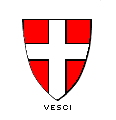
office (215)
233-4988
fax (000) 000-0000
Alt # (215) 000-0000
Brookfield Ancestor Project - Surety Barons
Magna Charta Baron Page
for
Eustace De Vesci
Lord of Alnwick, Northumberland

Return to Barons at Runnymede Page
WURTS’ MAGNA CHARTA provided a brief accounting of the feudal headquarters of some of the Magna Charta Barons. Some of the castles have been badly damaged. Some have disappeared entirely. Often we can learn of them through Medieval and Renaissance accounts, and some of them require the discerning eye of the archeologist. Others await the evidence brought out with a shovel and pick, by the trained archeological historian.
A portion of the information concerning Surety Baron EUSTACE de VESCI is as follows:
The VESCI family had control of Alnwick Castle (pronounced "Onick") built as a threat to Scotland in Northumberland. The Vesci family came to an end, and the Castle went to the Percys in 1309. It is now in fragments, embodied in a palace of later date. The walls have been integrated into the residence of the Dukes of Northumberland. The property consists of five acres. Fortunately, parts of the building have been restored. The oldest of these is the Norman gateway, dating from the 12th Century, also the well in the keep.
In the second half of the 18th Century more than half the Castle was renovated, and an Italian style of decoration was applied to the interior. In the park there is a monument commemorating the capture of William the Lion, when he besieged the town in 1174.
According to the chronicler of Alnwick Abbey, the Barony of Alnwick belonged to Gilbert Tyson prior to the Conquest. His son and heir, William, was killed at Hastings, leaving no issue. His daughter and estates were granted to Ivo de Vesci. In 1297 William, first Baron Vesci, died without surviving issue, and left the Barony to the Bishop of Durham, who sold it to Sir Henry Percy. The Castle slowly became the center of the town, which supposedly received its borough charter from King John.
Alnwick Castle, built by Eustace FitzJohn in 1140, is said to be the finest example of its kind. It is one of those Castles that boast an open or shell keep and a complete enceinte. For two Centuries it remained tenantless until the present family succeeded. The restoration was instituted between 1750 and 1786.
Near Philadelphia, the mansion of the Harrison Estate, now Beaver College, Glenside, Pennsylvania, is a replica of the Castle of Alnwick in Northumberland. It is considered a very creditable facsimile.
EUSTACE de VESCI, the Surety, was feudal lord of Alnwick Castle. He came of age in 1190 and, in 1199, was sent by King John as one of the ambassadors to King William the Lion of Scotland. He married one of William's daughters. Soon he became closely connected with the rise and progress of the Baronial cause. In 1212 he and Robert FitzWalter, the Surety, were called to give security for faithful allegiance, whereupon they fled to Scotland. De Vesci's English possessions were seized and also his Castle of Alnwick, which was to be destroyed, but the order was never carried out. This order so embittered de Vesci that he became the most persistent of the King's enemies, and a principal leader in the insurrection. He soon was taking a prominent part in all their conventions, endeavoring to revive the laws of Edward the Confessor. He was one of the Barons to whom the City and Tower of London were committed. He was excommunicated, and was one of those who urged the Dauphin to come to England. While attending his brother-in-law, Alexander, King of Scots, as he welcomed Prince Louis and paid him Scotland's homage in 1216, Eustace de Vesci passed Bernard Castle in Yorkshire and noted that it displayed the Royal banner. He approached the Castle to see if and how it could be captured, and was mortally wounded in the attempt.
Appreciation is expressed to Reed M. W. Wurts, one of the Heralds of the Society for furnishing the Baron’s Shield on this page.
Return to Barons at Runnymede Page